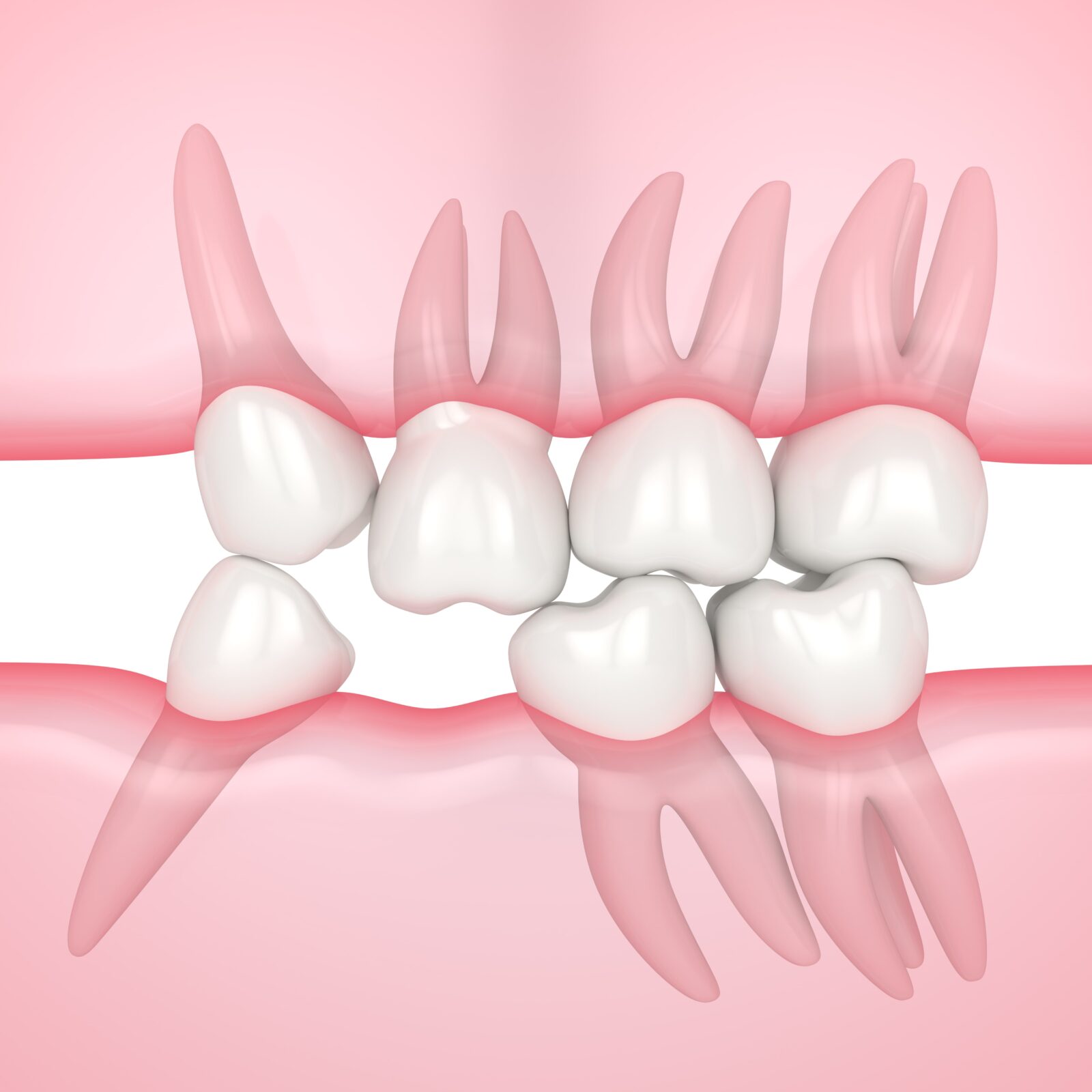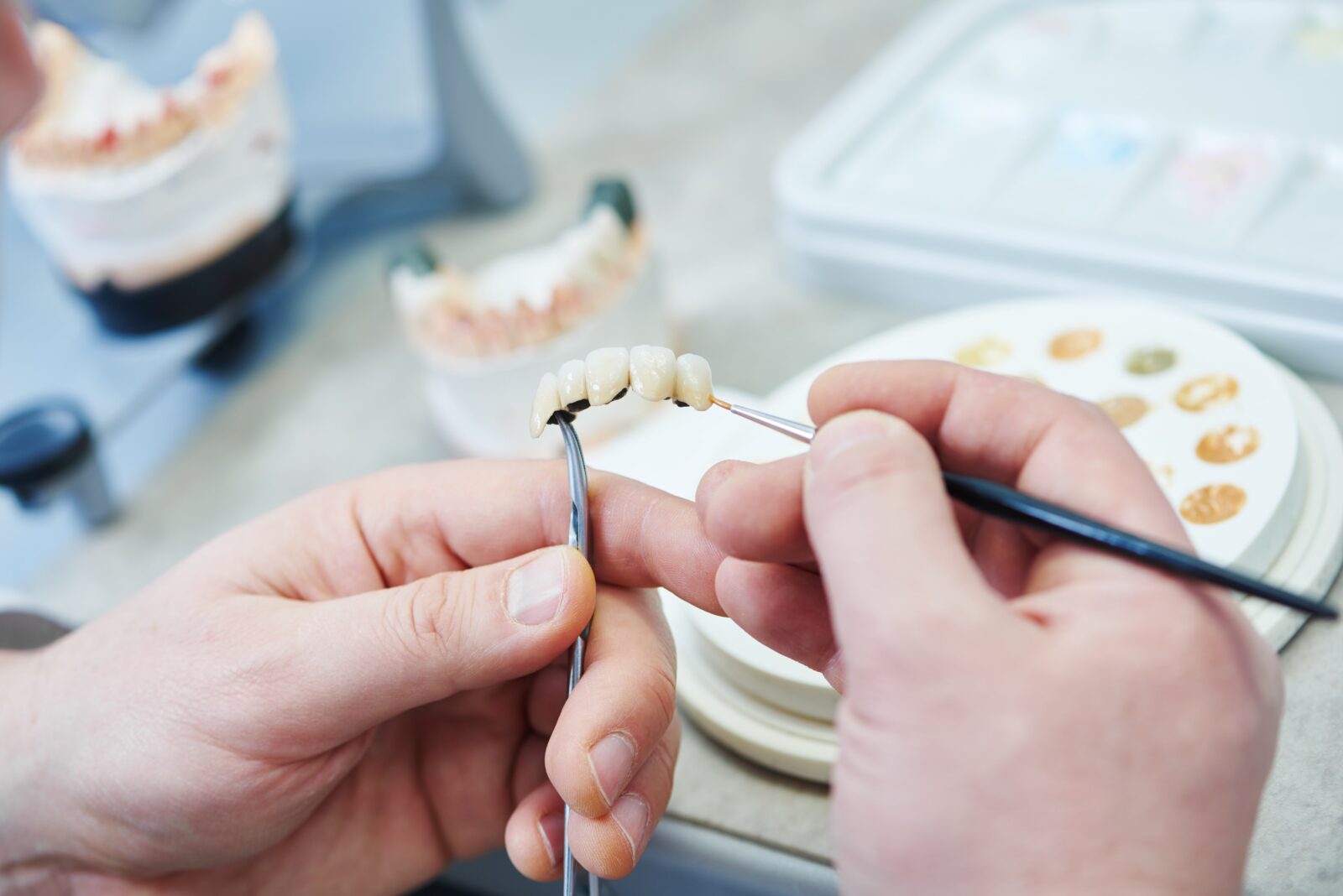Missing teeth can be a major problem, both for your appearance and your oral health. If you are missing teeth, you may want to consider prosthetic teeth. Prosthetic teeth are artificial tooth replacements that look and feel just like natural teeth. There are several different types of prosthetic teeth available, and the process of having them fabricated is relatively simple. In this blog post, we will discuss when prosthetic teeth are needed, the different types of prosthetics, and how prosthetic teeth are made.
When Prosthetic Teeth are Needed
Missing teeth can have a significant impact on your oral health. Even missing only one tooth can lead to various complications and these complications are amplified when multiple teeth are missing. In order to prevent the complications of missing teeth, your dentist will likely recommend replacing one or more missing teeth with a dental prosthetic. Prosthetic teeth are needed to prevent the following problems:

- Chewing and Digestion Issues: When you lose teeth, it can become difficult to chew your food properly. This can lead to indigestion and other digestive problems. Not only that, but it can also alter your diet and prevent you from eating certain foods. Eventually, this can lead to malnourishment.
- Speech Impediments: Missing teeth can also cause speech impediments. This is because there are several structures required to make certain sounds and your teeth are one of these structures. As a result, you may find yourself lisping or slurring your words. Additionally, missing teeth change the flow of air during speech, which can also cause speech problems.
- Bite Problems: Missing teeth can cause your bite to become misaligned. This is because your teeth play an important role in determining the alignment of your bite. When you lose teeth, it can cause your remaining teeth to shift out of place and this can lead to a number of problems, including TMJ (temporomandibular joint disorder).
- Bone Loss: Finally, missing teeth can also lead to bone loss in the jaw. This is because the roots of the teeth help to stimulate growth in the jawbone. Without this stimulation, the jawbone will begin to deteriorate and shrink.
Types of Prosthetic Teeth
There are several different types of prosthetic teeth available. The type that is right for you will depend on the number of teeth that you are missing and your budget. The most common types of prosthetic teeth are:
Dental Bridges:
A dental bridge is a false tooth that is held in place by dental crowns placed over the surrounding natural teeth. Dental bridges are typically used to replace one or more missing teeth that are located in a row.
Dentures:
Dentures are false teeth that are not attached to the natural teeth. They are held in place by suction or adhesive and can be removed at any time. Dentures can be used to replace all of the teeth in a single arch (either the top or bottom).
Dental Implants:
Dental implants are another option for replacing missing teeth. A dental implant is a metal post that is surgically implanted into the jawbone to act as an artificial tooth root. Once the implant has healed, a false tooth can be attached to it. Dental implants can be used to replace a single missing tooth, multiple missing teeth, or an entire arch of missing teeth. They are also the only prosthetic that can stimulate the jawbone and prevent bone loss.
How Prosthetic Teeth are Made

Prosthetic teeth are made by first taking an impression of the teeth. This can be done using either a physical mold or a digital scan. Once the dentist has an impression of your teeth, they will use this to create a model of your teeth. This model is then used to create the prosthetic teeth. Some dentists have in-office milling machines that can fabricate the prosthetic, while others will send out to have a dental lab fabricate your prosthetic.
For dental bridges, the false tooth (or teeth) is created first. The surrounding dental crowns are then created and attached to the false tooth. Once all of the pieces are ready, they are bonded to the natural teeth. In order to place a dental bridge, your dentist will first need to prepare the surrounding teeth by reducing them in size to accommodate the placement of a dental crown.
For dentures, the false teeth are created first and then they are attached to a plastic or metal base. The base is then molded to fit the contours of your gums. Dentures may require multiple fitting appointments to ensure the fit is perfect. This is important because dentures must fit properly in order to maintain suction and stay in place.
For dental implants, the artificial tooth root (the metal post) is implanted into the jawbone first. Dental implants require a minor oral surgery and a recovery period of 3-6 months where the implant will fuse with the surrounding bone. Although a temporary fake tooth will be placed, you will have dietary restrictions until the implant heals. Once the implant has healed, then the permanent false tooth is attached to it and you will be able to return to your normal diet.
In Conclusion
In this blog, we have discussed missing teeth and the different types of prosthetic teeth that are available to replace them. We have also gone over the process of how prosthetic teeth are made. No matter which type of prosthetic teeth you choose, they will be custom-made to fit your mouth and blend in with your natural teeth. With proper care, they can last for many years. If you have any questions about tooth prosthetics or if you think you might need one, please contact your dentist for more information.
